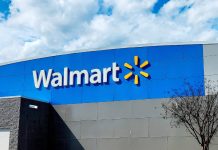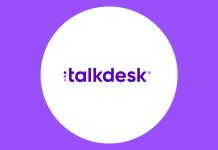Kantar Report: Unlock Brand Growth with Meaningful Differentiation and Presence. Data shows strong emotional connections and consistent brand presence drive sales.
With marketing budgets under scrutiny, CMOs must ensure their strategies are geared toward growth. Yet, the best approach isn’t always clear in an age of intense competition and channel fragmentation. According to a recent Kantar report, brand equity could be the key to unlocking the way forward.
“One of the distinctions of the brand blueprint that we’ve created…is it looks across years’ worth of data. So when you look at brand growth, you truly can understand before, middle, and after, which helps you come up with a prescription for the right methods to drive brand growth,” said James Potter, chief brand solutions officer at Kantar North America.
Kantar’s “Blueprint For Brand Growth” report divided the data into two buckets: attitudinal and purchase. The attitudinal bucket included 5.4 billion data points, encompassing 21,000 brands, 540 categories, and 54 markets. The purchase bucket included 1.1 billion data points, encompassing 20,000 brands, 100 categories, and 25 markets. The data was collected over ten years.
The findings suggest a three-pronged approach to brand growth: predisposing more consumers to a brand, being more present in the consumer lifecycle, and exploring new spaces for growth.
Finding meaning (and difference)
According to the research, market penetration remains at the heart of brand growth. However, reaching more target consumers is easier said than done. With more options available to consumers, making a brand stand out is key. Meaningful differentiation pays off even more, with five times the market penetration today than those who have not meaningfully differentiated themselves.
Meaningful differentiation boils down to building stronger emotional and functional connections with consumers. Building this difference can help predispose consumers to a brand, thus increasing purchase intent. Brands that consumers are more predisposed to have nine times higher volume shares of the market, two times higher price paid, and four times the likelihood of value share or making more money than the competition from a product.
“Being meaningful is addressing your consumer…if you’re meaningful to the right consumers, the right buyers, that’s going to set you up for success,” said Potter.
One key way brands can build meaningful differentiation is by being present across all the places where buying choices are made, from searches to websites to physical store shelves. Brands that are consistently present attracted seven times the number of buyers than brands that are present at just half of purchasing occasions.
Also Read: Salesforce in Advanced Talks to Buy Informatica
Taking up space
Expanding into new markets is one of the easiest ways to reach new consumers. Another way is to find additional uses for existing products. According to the research, brands that can find new uses for their products have twice the chance for growth compared to other brands. Additionally, those who increase the use of a brand by 10% can drive 17% growth.
 However, pushing into new spaces takes both time and effort. Proven methods include meaningful and differentiating innovation, expanded distribution, and communication.
However, pushing into new spaces takes both time and effort. Proven methods include meaningful and differentiating innovation, expanded distribution, and communication.
“You can imagine extending into new categories like Dove moving from soap into health care, skin care because they had a product and a reputation and brand that could extend properly,” said Potter.










